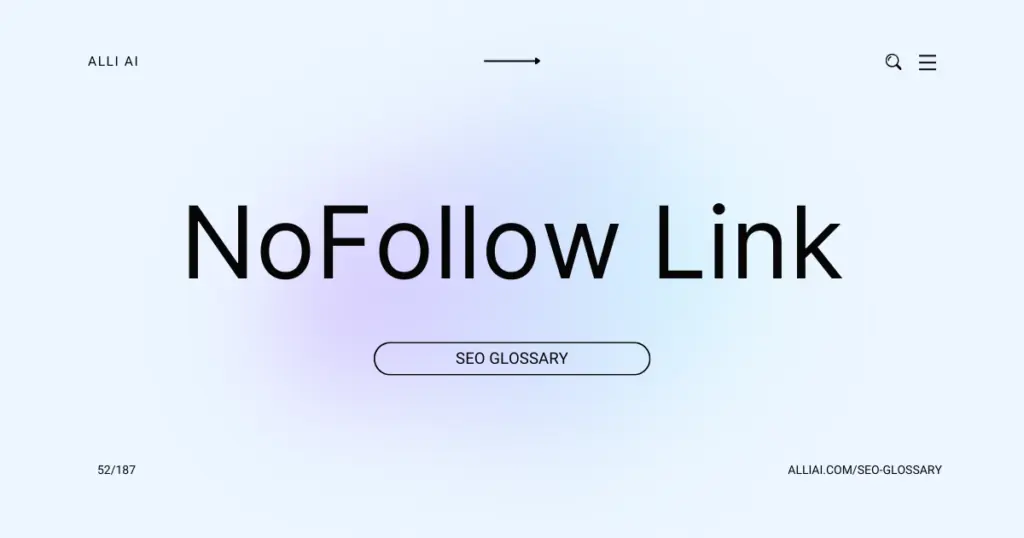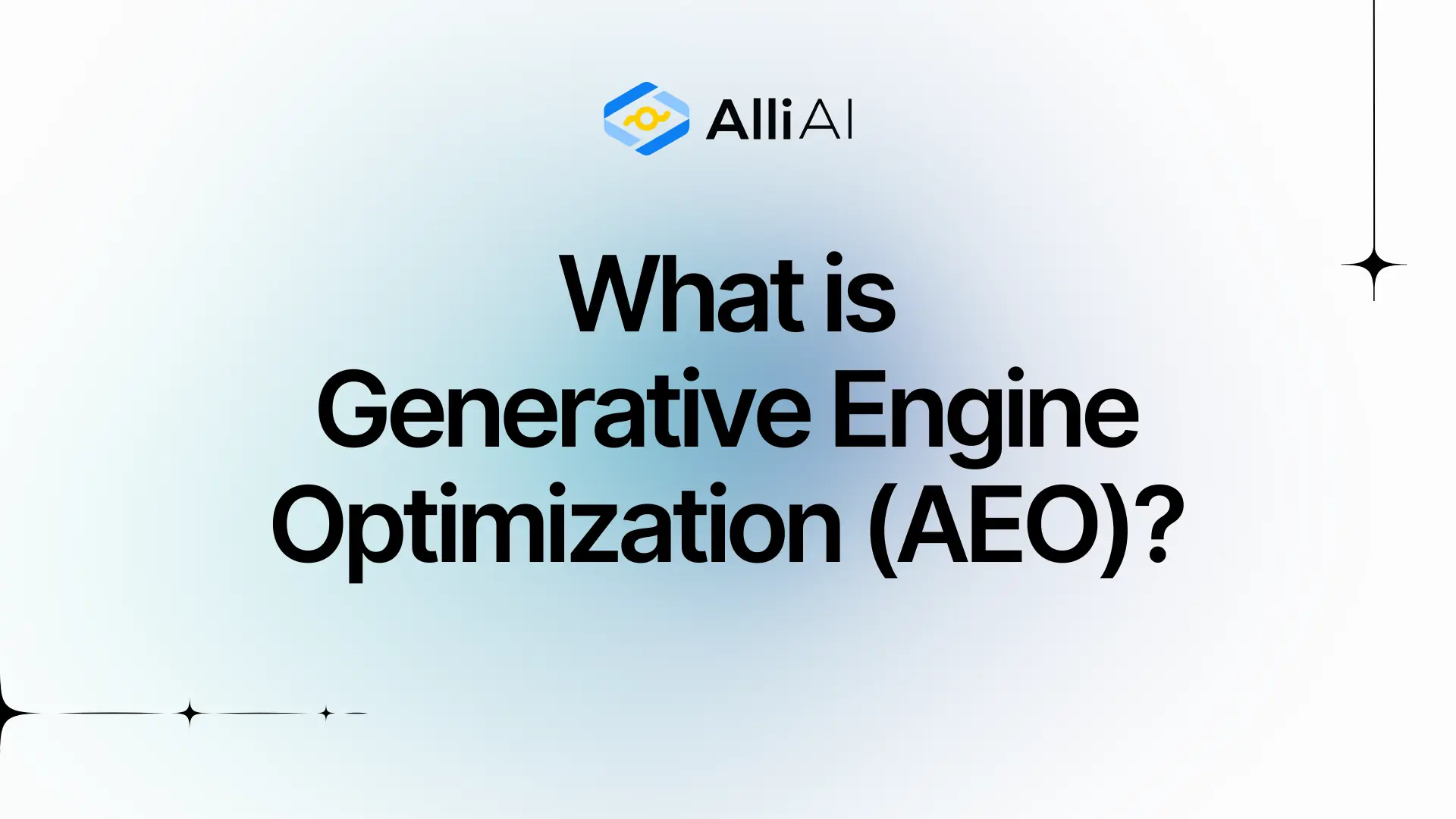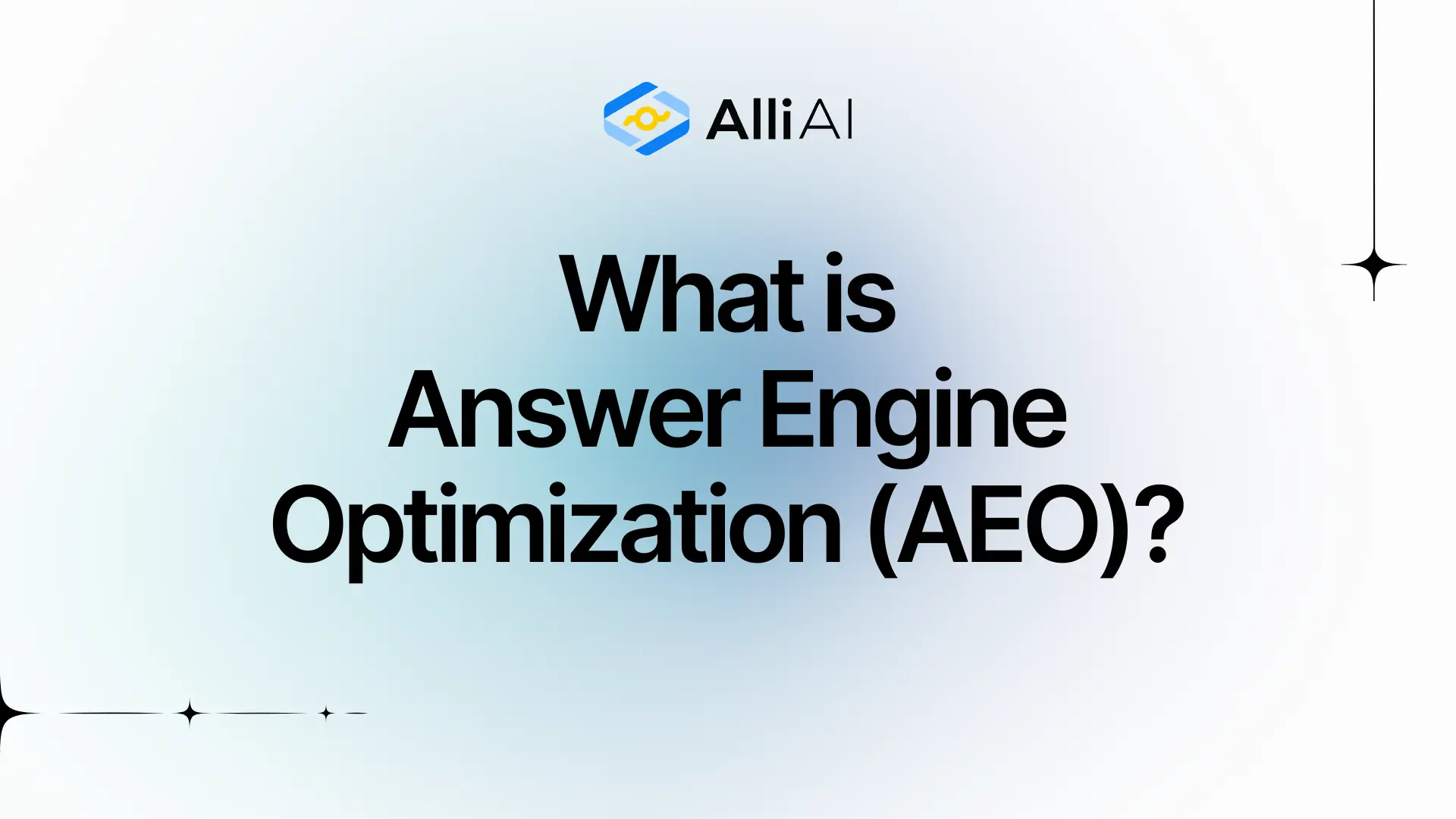What Does NoFollow Link Mean?
A NoFollow link is a type of hyperlink on a website that tells search engines not to count the link as an endorsement or vote for the page it links to. This means the link does not influence the search engine rankings of the destination page.
Where Does NoFollow Link Fit Into The Broader SEO Landscape?
NoFollow links, designated by the rel=”nofollow” attribute in HTML, tell search engines to ignore the link in terms of passing link equity or “link juice.” Initially created to combat spam in blog comments and user-generated content, NoFollow links serve as a way for webmasters to signal to Google and other search engines that the link should not influence the ranking of the link’s target in the search engine’s index.
Despite not passing on SEO value in terms of link equity, NoFollow links can still be beneficial in an SEO strategy. They help create a natural link profile, which is vital since a mix of NoFollow and DoFollow links tends to look more authentic. Additionally, NoFollow links from high-traffic and relevant websites can drive direct traffic and lead to increased brand exposure and recognition, indirectly benefiting SEO.
Moreover, in 2019, Google announced changes to how it treats the NoFollow attribute. It shifted from a directive to a hint, meaning Google might choose to consider it for ranking purposes under certain circumstances, although primarily it’s used to understand and uncover spam links. This change suggests that while NoFollow links do not directly contribute to SEO through link equity, they may be used by Google to gather context and insights about websites, further highlighting their indirect benefits in a comprehensive SEO strategy.
Real Life Analogies or Metaphors to Explain NoFollow Link
A NoFollow link is like a “Do not enter” sign for search engine crawlers. While visitors can still pass through and access the linked page, search engines are instructed not to follow behind, ignoring the pathway in their mapping of the web.
How the NoFollow Link Functions or is Implemented?
1. HTML Syntax: A NoFollow link is implemented using the rel=”nofollow” attribute within the anchor tag. The syntax looks like this:
“`html
Link Text
“`
2. Search Engine Interpretation: When a search engine crawls a web page and encounters a NoFollow link, it understands that the rel=”nofollow” attribute indicates that the link should not pass any link equity or “link juice” to the destination URL.
3. Behavior on the Web Page: Despite the rel=”nofollow” attribute, the link remains functional for users; they can click and follow the link as they would with any other hyperlink. The NoFollow attribute only affects how search engines treat the link in relation to SEO.
4. Robots Meta Tag: Alternatively, a NoFollow directive can be applied on a page-level using the robots meta tag in the HTML head section:
“`html
“`
This tag instructs search engines to treat all outbound links on the page as NoFollow links.
5. Link Acquisition and Use: Typically, NoFollow links are used when linking to untrusted content, to avoid passing authority to advertisements, or in user-generated content to prevent spam.
Impact NoFollow Link has on SEO
NoFollow links, indicated by the rel=”nofollow” attribute in HTML, instruct search engines to disregard the link in terms of passing on link equity or “juice.” This means that NoFollow links do not contribute directly to a website’s search engine rankings. However, they do not negatively impact SEO performance; they are simply neutral in influencing a site’s position in search engine results pages (SERPs).
From a user experience perspective, NoFollow links function just like any other link to users; the attribute does not affect how users interact with the link. Therefore, while NoFollow links do not bolster a site’s authority through link juice, they can still drive traffic directly to the site, which indirectly benefits SEO by increasing user engagement and potentially affecting other ranking factors like time on site and bounce rate.
SEO Best Practices For NoFollow Link
1. Identify which links on your site should be nofollow: These include links to untrusted content, paid links, and links in comments and forums.
2. Add the rel=”nofollow” attribute to the relevant tag. For example:
“`html
Link Text
“`
3. Use nofollow for sponsored or affiliate links to comply with search engine guidelines.
4. Regularly audit your site’s external links to ensure that nofollow is being used appropriately.
5. Check your CMS settings, as some content management systems like WordPress automatically add nofollow to certain types of links.
6. Ensure internal links that are important for SEO do not have the nofollow attribute.
7. Use tools like Google Search Console or SEO auditing tools to check and manage your nofollow links effectively.
8. Stay updated with Google’s guidelines on nofollow links as these can change and impact how they should be used.
9. Educate your content team about when and how to use nofollow links.
Common Mistakes To Avoid
1. Overuse in Internal Linking: Using NoFollow on internal links can prevent search engines from properly indexing your site.
Solution: Only use NoFollow on internal links that lead to unimportant pages.
2. Misunderstanding its Impact: Thinking that NoFollow links don’t contribute to SEO at all can be a mistake, as they can still generate traffic and indirectly influence your rankings.
Solution: Consider the potential traffic from NoFollow links and use them when they lead to valuable user interactions.
3. Blocking Link Juice Unnecessarily: Applying NoFollow to all outbound links can harm your site’s trustworthiness and its ability to participate in the web’s natural linking environment.
Solution: Evaluate links on a case-by-case basis and allow some trusted do-follow links to maintain a natural link profile.
4. Using NoFollow for Paid Links Only: This can look suspicious to Google if all paid links are NoFollow and all others are DoFollow.
Solution: Strategically use NoFollow on some non-paid links where appropriate to maintain a balanced profile.
5. Ignoring NoFollow Links in Backlink Analysis: Disregarding NoFollow links completely in your backlink analysis can give you an incomplete picture of how others link to your site.
Solution: Monitor and analyze NoFollow links to understand your site’s full backlink profile.






